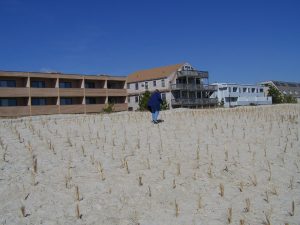New award recognizes youth accomplishments in wetlands
DOVER – DNREC’s Division of Watershed Stewardship is seeking nominations for the 2016 Delaware Wetland Warrior Award and the program’s new youth award, Wetland Apprentice. These awards recognize exemplary efforts to study, protect and preserve wetlands and the critical services they provide to all Delawareans.
The adult Wetland Warrior Award, now in its 9th year, is presented annually to a citizen, organization, business or other group that has demonstrated outstanding efforts to benefit Delaware’s wetlands through outreach and education, monitoring and assessment or restoration and protection. Past recipients of the award have varied from natural resources program managers who have pushed the envelope in restoration practices, to landowners who have become voluntary hands-on stewards of wetlands on their property, to volunteers who have run and supported wetland conservation programs. For a complete list of all past recipients, please visit the Wetland Warrior webpage.
The Wetland Apprentice award will recognize a K-12 student, classroom or school for volunteering or completing a project to evaluate, improve or educate about the condition of Delaware’s wetlands.
The Wetland Warrior and Wetland Apprentice awards will be presented by Governor Jack Markell and DNREC Secretary David Small on Governor’s Day, Thursday, July 28, at the Delaware State Fair in Harrington. Awardees also will be recognized on the Delaware Wetlands website and social media sites. Information on submitting a nomination can be found on DNREC’s Delaware Wetland Warrior webpage. Nominations must be submitted by Friday, June 24.
Delaware has more than 320,000 acres of wetlands, comprising about 25 percent of the state’s area. Wetlands serve a vital role, protecting lives and property from the impacts of floods and storms, filtering pollutants and improving water quality, reducing erosion and providing critical habitat for fish and wildlife. Almost every part of our state is within one mile of a wetland – making wetland protection essential to our health and safety.
Wetland Warriors and Apprentices are a key element in the wetlands protection, restoration and education. For more information about Delaware’s wetlands or the awards program, please visit de.gov/delawarewetlands, view the Delaware Wetlands Fact Sheet, or contact Wetland Outreach Specialist Brittany Haywood at 302-739-9939 or Brittany.Haywood@delaware.gov.
Media Contact: Joanna Wilson, DNREC Public Affairs, 302-739-9902
Vol. 46, No. 110


